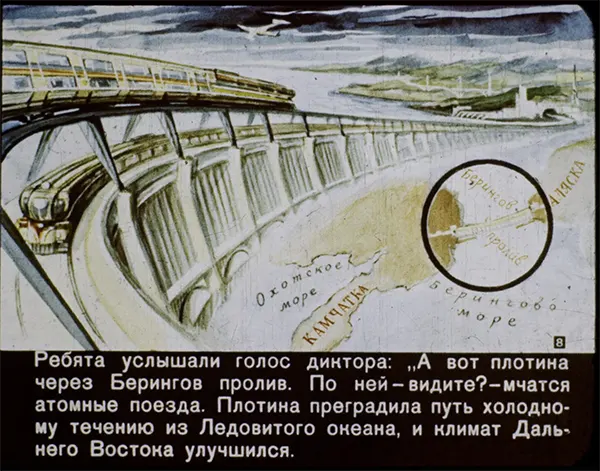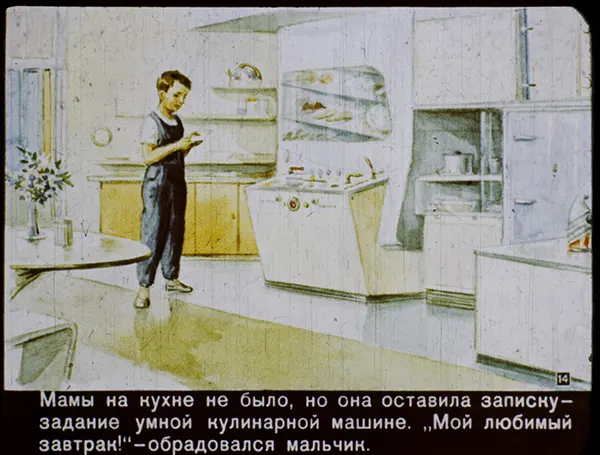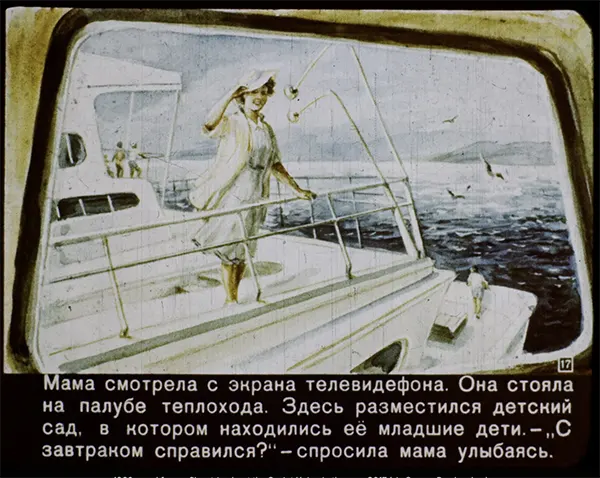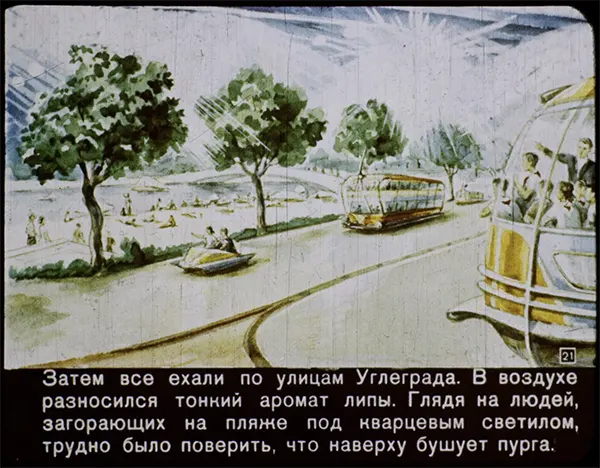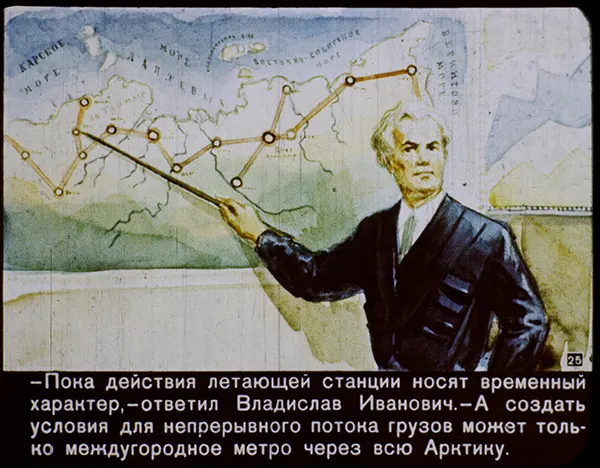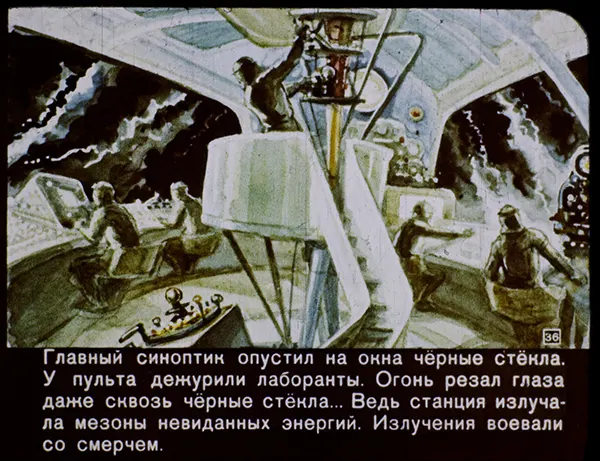In the realm of retro-futurism, few artifacts are as intriguing as those stemming from the Soviet Union during the Cold War. Locked in ideological battle and the Space Race, the USSR was a hotbed of speculative art and literature, imagining future worlds and technologies. One such fascinating cultural artifact is the 1960 filmstrip “In the Year 2017,” created by V. Strukova and V. Shevchenko under the auspices of the Soviet film studio “Diafilm.” This optimistic and politically charged projection not only reflects the zeitgeist of its time but also offers a captivating look at how the Soviets of the past envisioned our present.
A Utopian Vision Amidst Cold War Tensions
“In the Year 2017” is an enthralling mix of 1960s Soviet aspirations, technological fantasies, and Cold War propaganda. The story is set against a backdrop where the Western world has imploded due to its “imperialist” tendencies, while the Soviet Union, thriving and unchallenged, leads humanity in scientific and societal progress.
Central to this utopia is the concept of scientific prowess as the driving force behind the ideal society. The filmstrip is rife with bold predictions and imaginative solutions to global issues, from atomic trains crisscrossing continents to floating power stations controlling the weather.
The Atomic Dream and Meson Energy
Reflecting the era’s infatuation with atomic power, “In the Year 2017” envisions a world almost magical in its technological advancements. One of the more striking concepts presented is the use of “meson energy.” Mesons, subatomic particles studied extensively during the 1950s and 1960s, were once theorized as a potential energy source.
Although meson energy was later debunked, its inclusion in the narrative highlights the period’s faith in science solving all of humanity’s problems, effectively leading to a societal utopia. These theoretical advances, presented in the filmstrip, embody the spirit of an era where scientific breakthroughs were viewed as the road to a brighter future.





